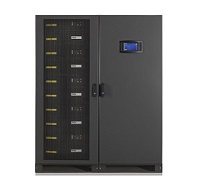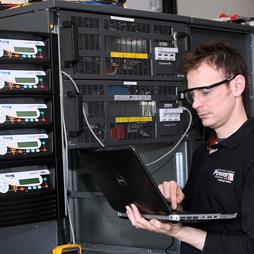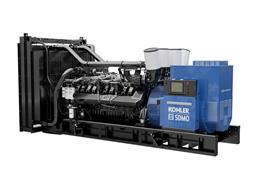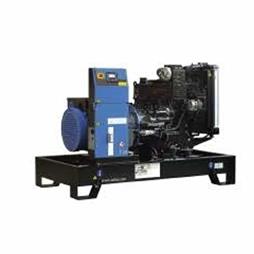Why the EU is targeting the environmental cost of UPSs – and what to do about it
14-11-2015
Growing data centre electricity consumption has reached 3% of the world’s total, and UPSs are among the highest contributors to this demand. Accordingly the European Commission is introducing legislation to reduce UPSs’ environmental impact throughout their life cycle.
In this article, Alan Luscombe, director at Uninterruptible Power Supplies Ltd., a Kohler company, explains how data centre operators can use the latest available modular UPS topology to minimise their UPSs’ lifetime carbon footprint without compromising power availability.
In 2013, data centres accounted for 3% of the world’s electricity consumption – and that share is growing. Apple, for example, has recently announced a $1.9bn investment in its first European data centres, in Denmark and Ireland. Within the context of such large-scale consumption, any energy efficiency loss will be hugely significant – and, according to Google, UPSs create one of the largest power losses within data centres.
Accordingly, UPSs have come under the microscope within the European Commission’s Product Environmental Footprint Category Rules (PEFCR), driven by the wider directive ‘Building a Single Market for Green Products’. This will very possibly lead to new regulations with the intention to reduce the environmental footprint of data centres. The specific element of data centre performance that the PEF apparently focuses on is power supply, with a dedicated category for UPSs. Operators may well find themselves required to perform life cycle assessments (LCAs) and abide by the PEFCR for their European operations’ power supplies.
Against this background it is essential for data centre operators to achieve the highest possible UPS energy efficiency through the system they choose, the way they configure it and how they operate it – while also maintaining the highest level of availability, which for many users remains the top priority.
In fact, UPSs today can satisfy both these objectives at data centre power levels, by using the right power semiconductor technology and design topology. This achieves a considerable saving in both size and weight by eliminating the transformer. In a typical implementation, the footprint is reduced by over a half, while the weight diminishes to just a quarter of its earlier value.
The scale of these reductions has had a profound impact on the way UPS systems can be built and the resulting efficiency, availability and scalability they offer. The ultimate embodiment of these advantages is found in the three-phase, rack-mount modular UPS systems now available. Instead of a single, inflexible free-standing implementation, a modular UPS comprises one or more small transportable modules that can be incrementally plugged into or removed from a UPS frame to achieve exactly the capacity required.
Efficiency in operation, and from cradle to grave
The underlying transformerless design is highly efficient, offering about 5% improvement over the earlier transformer, equivalent with an efficiency-level up to 96.1% over the entire load spectrum. This allows considerable cost savings due to reduced electricity consumption and less demand for cooling. The power factor is improved, which minimises the sizing of cables and switchgear, and may also reduce electricity running costs. Eco-mode operation, while not suitable for every application, offers the possibility of further improving power efficiency to 99%.
The modular approach is also efficient in closely matching the load size, even if it changes significantly over time. In the PowerWAVE 9500DPA – available today from UPS Ltd., an installation could start as one frame populated with a single 100 kW module. As the data centre grows, capacity can be added with 100 kW at a time, until the frame is fully populated with five modules providing 500 kW capacity; a process known as vertical scaling. Up to six frames can be paralleled (horizontally scaled), providing up to 3 MW capacity. Throughout the expansion, the data centre owner’s capital costs have been minimised. Additionally, the reduced demand for hardware reduces life cycle energy impact from raw material extraction through materials processing, manufacture, distribution, use, repair and maintenance, and disposal or recycling.Visit the Kohler Uninterruptible Power website for more information on Why the EU is targeting the environmental cost of UPSs – and what to do about it






